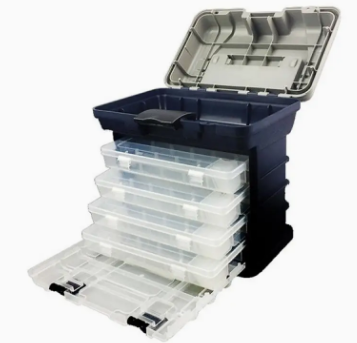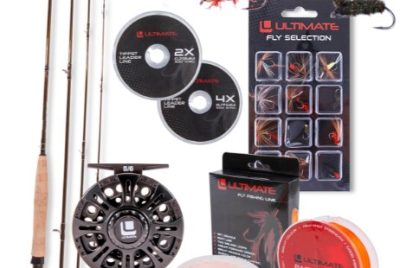Fly Fishing Boxes
Introduction
As an avid fly angler, I’m thrilled to share my insights on fly fishing boxes – an indispensable tool for any fly fishing enthusiast. In this article, we’ll explore the world of fly fishing boxes, their types, and why they should be an essential part of your fly fishing gear.
The Crucial Role of Fly Fishing Boxes
Before we dive into the specifics of fly fishing boxes, let’s understand their pivotal role in the world of fly fishing. These unassuming containers play a significant part in making your fly fishing experience more organized, efficient, and enjoyable.
Fly fishing is an art that requires precision and finesse. It’s about fooling a fish into biting an artificial fly, mimicking the insects they feed on. To accomplish this, anglers carry an array of flies, each designed to imitate a specific insect or stage of aquatic life.
Imagine being out on the water, surrounded by the beauty of nature, with your trusty fly rod in hand. You spot rising fish, and the excitement builds. But to entice those finicky trout or bass, you need to select the right fly. This is where fly fishing boxes come into play. They are your treasure troves of flies, neatly organized and readily accessible.
Types of Fly Fishing Boxes
Not all fly fishing boxes are created equal. There’s a wide variety to choose from, each tailored to specific fly storage needs. We’ll explore:
Pocket-Sized Fly Boxes
Pocket-sized fly boxes are the minimalist’s choice. These compact containers are perfect for anglers on the move, whether you’re hiking to remote streams or navigating a rocky riverbank. They slip easily into your vest or pocket, keeping your essential flies close at hand.
Slit Foam Fly Boxes
Slit foam fly boxes are the workhorses of fly storage. Open one up, and you’ll find rows of neatly organized slits where you can secure your flies. The foam gently holds each fly in place, preventing tangling or damage. These boxes come in various sizes, making them versatile for different fly types and quantities.
Magnetic Fly Boxes
Magnetic fly boxes add a touch of magic to your fly storage. Inside these boxes, flies are held securely in place by powerful magnets. Not only does this keep them from shifting during transport, but it also prevents damage to delicate dry flies and emergers.
Fly Tying Boxes
Fly tying is a creative aspect of fly fishing, where anglers craft their flies to match specific hatches or conditions. Fly tying boxes are designed to hold a range of materials like feathers, threads, and hooks, making them indispensable for fly tyers. These boxes often have compartments and dividers to keep materials organized.
Considerations When Choosing a Fly Fishing Box
Selecting the right fly fishing box involves careful consideration. We’ll discuss:
Fly Storage Capacity
Fly fishing is all about options, and having the right fly at the right time can be the difference between a successful day and a frustrating one. Consider the size and capacity you need to accommodate your fly collection, whether it’s a few essentials or a vast assortment for various fishing situations.
Material and Durability
The material of your fly box matters for durability and protection. Common materials include plastic, metal, and waterproof fabrics. Each has its advantages, so choose one that matches your fishing style and environment. For example, if you frequently fish in wet conditions, a waterproof fly box is a wise choice.
Waterproof or Water-Resistant?
Speaking of waterproofing, it’s essential to decide whether you need a fly box that’s fully waterproof or simply water-resistant. While a waterproof box provides the highest level of protection, water-resistant boxes can also safeguard your flies in drizzly conditions.
Organizing Your Fly Collection
Efficiently organizing your flies within your fly box is key to a successful day on the water. Here are some tips and techniques for keeping your flies in order:
- Categorize by Fly Type: Group your flies by type (dry, nymph, streamer) and size. This makes it easy to locate the right pattern when needed.
- Use Fly Box Inserts: Many fly boxes come with foam or compartmentalized inserts that help keep your flies neatly arranged.
- Label Your Box: Consider labeling your fly box to quickly identify its contents. A simple label can save you time when you’re knee-deep in a river.
- Rotate Your Flies: To ensure your flies get equal action and wear, rotate them in and out of your primary box. This helps maintain their integrity.
Benefits of Using Fly Fishing Boxes
Using a fly fishing box offers numerous advantages, including:
Easy Fly Identification
The transparent or labeled lids of fly boxes make it simple to identify the right fly pattern quickly, saving you time and frustration on the water.
Improved Fly Longevity
Proper storage in fly boxes extends the life of your flies. They protect delicate materials like hackles and tails from getting crushed or tangled, ensuring they remain in excellent condition for multiple outings.
Streamlined Fishing Experience
Perhaps the most significant benefit is how organized flies lead to a more efficient and enjoyable fly fishing experience. Instead of fumbling through disorganized fly wallets or containers, you can focus on presenting your fly with precision and accuracy.
Tips for Maintaining Fly Fishing Boxes
Proper maintenance ensures that your fly box remains in top condition. Here are some tips on cleaning and caring for your fly boxes:
- Rinse After Use: After each fishing trip, rinse your fly box with freshwater to remove any dirt, salt, or debris.
- Allow to Dry: Ensure your fly box is thoroughly dry before storing it to prevent mold or mildew.
- Inspect Regularly: Periodically inspect the hinges, latches, and seals for signs of wear or damage. Replace any worn parts to maintain the box’s integrity.
- Store in a Cool, Dry Place: When not in use, store your fly boxes in a cool, dry place to prevent warping or deterioration.
Conclusion
In the world of fly fishing, a reliable fly fishing box is like a trusted friend – always there to make your angling adventures smoother and more successful. So, as you prepare for your next fly fishing trip, consider the advantages of incorporating a fly fishing box into your gear. Your flies will thank you, and so will the fish.
FAQs
- What’s the best way to organize dry flies, nymphs, and streamers within a fly fishing box?
- Explore strategies for arranging different types of flies in your box efficiently.
- Can I use multiple fly boxes to categorize my flies based on hatches or seasons?
- Learn how to create a fly box system that helps you match the hatch and adapt to changing conditions.
- Are there specialized fly boxes for saltwater fly fishing, given the corrosive nature of saltwater?
- Discover fly box options designed to withstand the challenges of saltwater fly fishing.
- How do I prevent flies from rusting within a fly fishing box, especially if they get wet?
- Get tips on preventing rust and ensuring the longevity of your fly collection.
- Can I use fly fishing boxes for storing other small fishing accessories, like hooks or weights?
- Learn about the versatility of fly boxes and how they can help organize various fishing gear.



